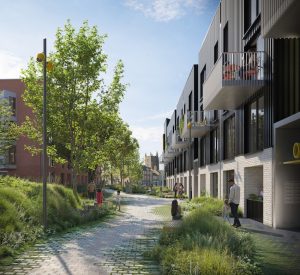Council prepares to dispose of Birmingham city landmark

ONE of Birmingham’s best-known civic buildings is set to be declared surplus to requirements by the city council.
The Birmingham Municipal Bank in Broad Street could be set for a new lease of life as a community hub and museum under plans put forward by the University of Birmingham.
A report to the next Birmingham cabinet advises councillors of a “very significant proposal” from the university to invest and create a landmark facility within the city centre.
The disposal would save the council having to pay for the upkeep of the Grade II listed building and the recommendation put forward in the report suggests granting the university a long-term lease for the building.
No details on costs have been included within the public part of the report.
However, the council said the disposal of the building would generate capital receipts for the authority – which currently needs to raise every penny it can get – while maintaining the bank as a key amenity within the city centre.
The building, which opened in 1933, was designed by architect Thomas Cecil Howitt in the Monumental Classical architectural style.
The property served as the headquarters of the Birmingham Municipal Bank, originally the Birmingham Corporation Savings Bank, which was established by a 1916 Act of Parliament to help fund the war effort during the First World War. It subsequently became the first and only municipal bank in the country.
After it closed in the 1990s, the building was preserved and has been used as a film set for various TV and film productions, while it has also served as a temporary exhibition hall and was even used by John Lewis as the venue for a city reception announcing the retailer’s intention to open a new store at Grand Central.
Currently vacant, the building has become a prime piece of real estate because of its position sandwiched between the new headquarters of HSBC’s UK bank and Arena Central.
Officers said they had received a formal proposal by the University of Birmingham, which would ensure the future beneficial use of the historic building.
The university is proposing to create a gateway amenity to the city centre, capitalising on the building’s prime location next to Arena Central, within Centenary Square and opposite the Library of Birmingham.
It would see the building become a research showcase with museum space, a community hub, performance space for music/film/arts and drama, a business engagement element with major corporates, blue-chip, tech partners and an arts & music showcase.
“Given its architectural merit and history, the proposed use by the University of Birmingham provides the necessary reassurance that the building will be subject to appropriate restoration /building repair and maintenance programmes,” states the report.
“The property is surplus to the council’s needs and bringing forward for disposal will enable the preservation of an important historic building in the heart of the city centre.”
It said not to proceed with the sale would result in the council continuing to bear responsibility for the upkeep of the building and the associated management cost liability for managing an empty property.









